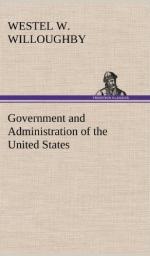The following figures, taken from the report of the Secretary of the Treasury for 1889, give the amounts of the various sorts of money described in the foregoing, which were then in the Treasury, in the banks, and in the hands of the people:
Gold coin and gold bullion, $680,063,505 Silver coin and silver bullion, 343,947,093 U.S. Treasury notes, 346,681,000 National Bank-notes, 211,378,963 Subsidiary coins, 76,601,836
It will be noticed that gold and silver certificates are not included, for, as explained, they merely represent an equal amount of coin or bullion on deposit.
The total amount of money is thus approximately $1,660,000,000, which, divided by the total population, gives about $27 per capita. It should be borne in mind in connection with these figures that other devices, such as checks, drafts, bills of exchange, and other forms of credit, are used side by side with money in carrying on trade and serving the same purposes.
By the Compromise Silver Bill of July 14, 1890, provision was made for a new kind of paper money. By this act the Secretary of the Treasury was directed to purchase, from time to time, silver bullion to the amount of 4,500,000 ounces each month, and to issue in payment for such purchases Treasury notes; these notes so issued to be redeemable on demand in coin, and to be a legal tender in payment of all debts, public and private, except where otherwise expressly stipulated.
[Footnote 1: In the preparation of this article, much assistance has been derived from an article by H.C. Adams contributed to the Chautauquan.]
CHAPTER XIX.
Public Lands of the United States.
Prior to 1781 but six of the original thirteen States—New Hampshire, Rhode Island, Maryland, Pennsylvania, New Jersey, and Delaware—had exactly defined boundaries. The others claimed lands of various extents, stretching to the Mississippi River, or even to the Pacific Ocean. The title to all this land was then in the individual States, and the National Government, as such, had no land of its own. This question of the ownership of the western land was one of the subjects of controversy and discontent between the States. It delayed the adoption of the Articles of Confederation for some time. Those States with little or no land regarded with jealousy their more fortunate neighbors, and would not consent to a union until a settlement or understanding was reached.
The Articles of Confederation were adopted only after assurance was made that all the public lands would be ceded to the Federal Government. This was finally done by the States.
The Government formed under the Constitution succeeded to all this land, and in addition, to further cessions made by the States, the last being that of Georgia in 1802. The subsequent additions of territory were made directly to the United States, and not to the States, and all land thus gained was held as public land to be disposed of by Congress.




